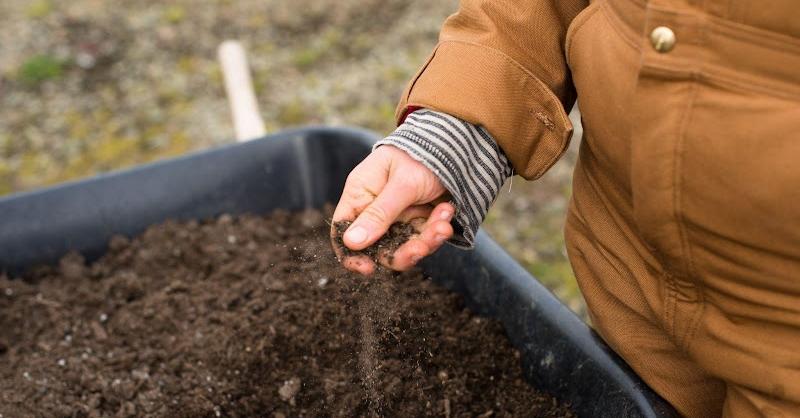Lime can help correct soil acidity levels, improve drainage and guard against erosion – however it’s essential that you select an appropriate lime treatment that meets the specific needs of your soil.
Calcitic lime is often the ideal solution for gardeners as it helps reduce soil acidity, increase nutrient availability and encourage beneficial microorganism growth. Dolomitic lime contains magnesium and should only be applied if soil testing reveals an inadequate supply of this mineral.
Improves Soil Health
Healthy soil is essential to plant health, but some soils can become overly acidic over time.
One effective solution to restore the correct pH balance is using agricultural lime, also known as aglime – an organic compound composed of ground limestone that, when tilled into soil, raises pH levels into alkaline territory allowing helpful microorganisms and plants to flourish more successfully.
Before purchasing an aglime product, take your soil test report into consideration as well as which vegetation you are trying to cultivate in your yard or field. The report will indicate how much aglime is necessary to return your soil back to an ideal pH level.
Dolomitic and calcitic lime are two primary varieties of aglime.
Both varieties are composed of ground up limestone, yet differ significantly in how well they neutralize acidity in soils. Dolomitic lime contains magnesium carbonate in addition to calcium carbonate which allows it to reduce acidity more effectively than its calcitic lime products counterparts. It is important to note that too much magnesium carbonate could pose problems depending on soil characteristics.
Increases Nutrient Absorption
Soil acidification is a natural process, but nitrogen-intensive fertilization practices often accelerate it. Applying pulverized limestone tilled into soil can reverse this effect and raise its pH levels to an ideal level for your crop, improving overall soil health and its productivity.
Both agricultural lime and dolomitic lime can be used to raise soil pH, depending on your specific needs. Dolomitic lime may also help when treating forage tetany or field crop magnesium deficiency concerns arise.
Before selecting a type of liming to use, it’s essential to consider soil texture as different minerals will be available depending on sandiness, loaminess and clayness. In addition, it is crucial to comprehend how soil acidity will influence plant growth as this relates to optimal pH levels for optimal plant development.
Lime is produced by heating calcium carbonate found in sources like limestones, corals, chalk or the shells of marine organisms like oysters or clams to form Calcium Hydroxide which can then be further hydrated with water. You can visit this site to learn more about this mineral.
This process is known as “slaking”, although some producers refer to it as “soaking”. Once lime has been saturated it does not undergo further chemical reactions and can be used instead of other types of hydraulic cements.
Reduces Soil Acidity
Acidic soil is a widespread issue that can hinder plant growth and lead to nutritional deficiencies, often as the result of excessive rainfall, organic matter decay, parent material or acidic fertilizers; lack of microorganism activity in the soil also contributes to acidity levels in its surrounding environment.
The pH of soil determines its availability of nutrients. When soil acidity increases, certain cations like iron and molybdenum become bound, making them unavailable for uptake by plants.
Furthermore, this limits other ions like aluminum from being taken up, leading to aluminum toxicity and stunted plant growth.
Acidification occurs due to chemical weathering of basic cations such as calcium, magnesium, potassium, and sodium. When these basic cations leach into groundwater or precipitate faster than they can be replaced by other minerals entering the soil, an acidification takes place, leading to further soil acidification.
But there are ways to fix soil acidity. Liming soil, one of the most effective and cost-effective strategies to lower pH levels, removes hydrogen ions from it to make it more alkaline; other ways include adding sulfur.
However, be cautious with it as too much sulfur could be toxic to plants; it is best to combine various techniques gradually over a year for best results; doing this will prevent depleting nutrients, damaging beneficial organisms and making soil healthier for growing desired crops.
It is important to work slowly in order to mitigate your risk. You can click the link: https://www.gardeningknowhow.com/beginners-guide-to-gardening.htm to learn more about gardening.
Increases Water Absorption
Calcitic lime-treated soil can absorb and retain more water for plant roots to use, as well as encouraging beneficial microbes that loosen hard clay soil, making it an excellent choice for gardens and vegetable plots.
Ag lime requirements to correct soil acidity are usually described by its “lime requirement”, or the number of pounds of CaCO3 per acre necessary to reach a particular pH value under field conditions. The appropriate soil pH depends on what crop species is being planted as its acid-loving or alkaline-tolerant requirements differ accordingly.
